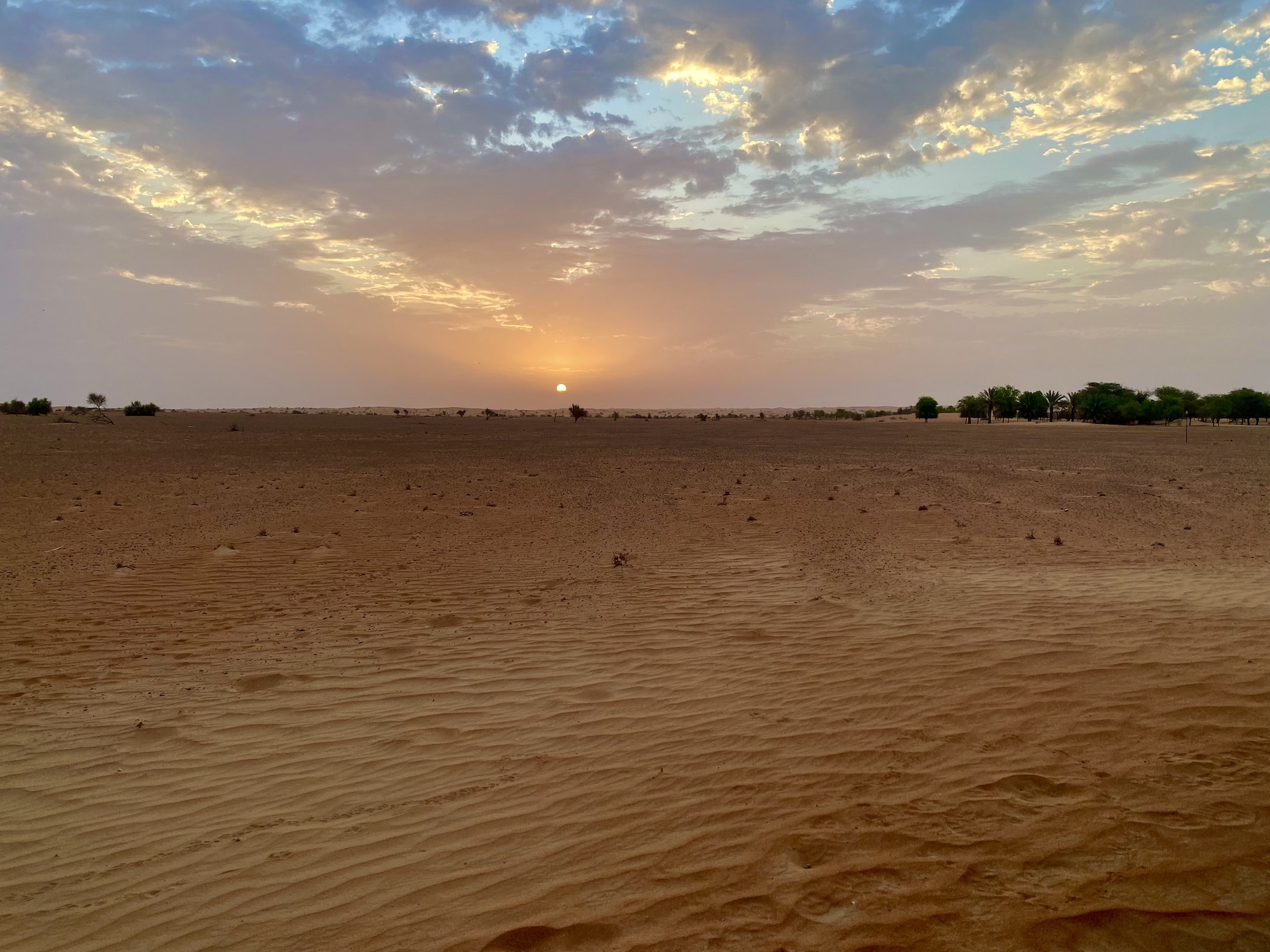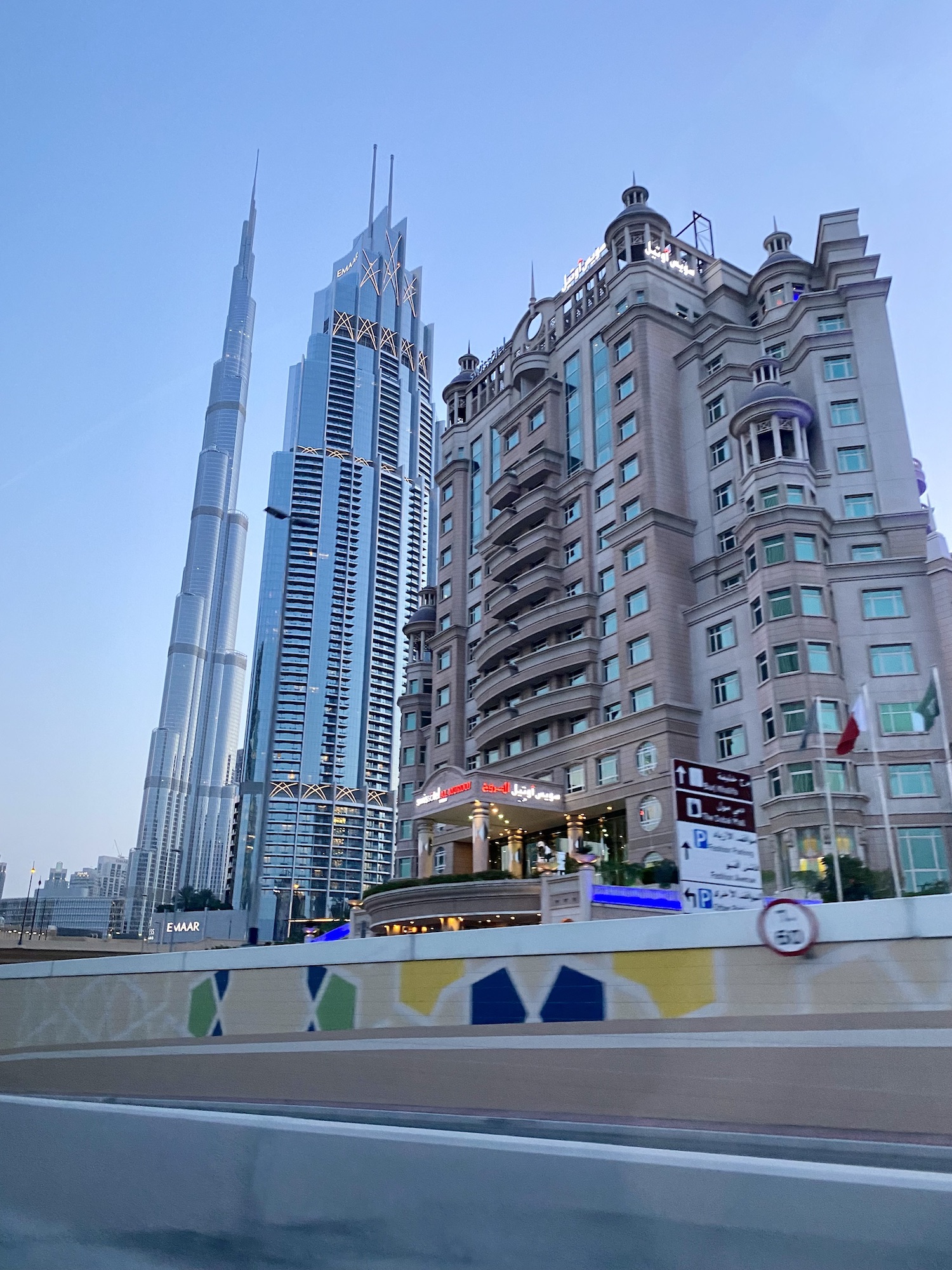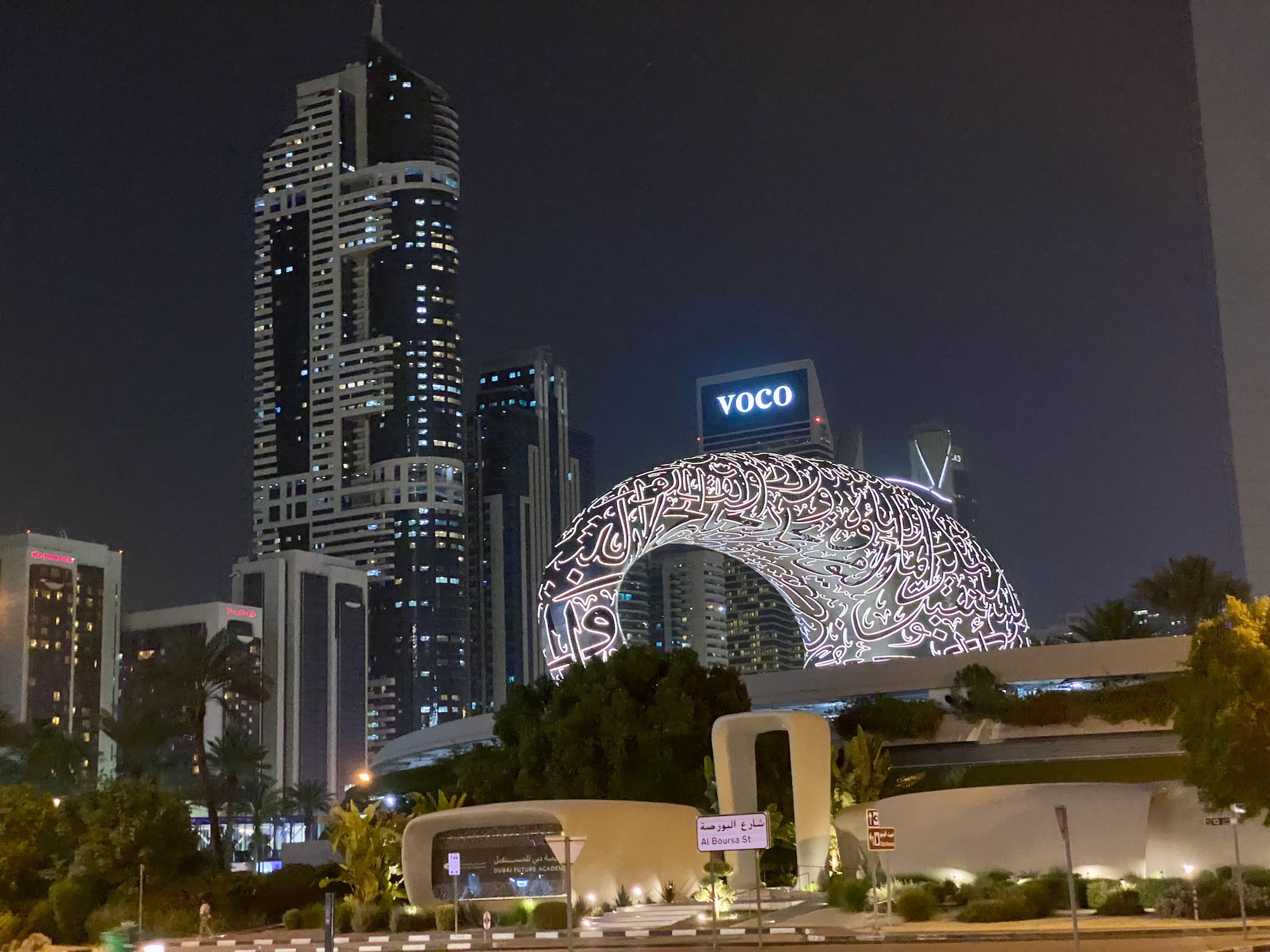Sukuk - No Interest Here
16 Mar 2019I just arrived back in Pittsburgh after spending a week at Carnegie Mellon’s campus in Doha, Qatar. My time on Doha was incredible and something I’ll very much be digesting over the coming weeks and may write about soon on this blog. I wanted to thank all of the students at CMU-Q for their hospitality (I had heard much about Arab hospitality and was still blown away by the generosity and kindness I was afforded) and for the administrators at CMU (Kevn D’Arco, Elizabeth Coder, Lenny Chan, and especially Renee Camerlengo) for all the work they did in to make this trip possible. They enabled our two groups and all the others who we interacted with to see the world as a smaller, more similar, place. I also wanted to thank my CMU-Q partner Rameez who got excited when I told him I had a blog and has definitely read more of these posts than my mother :p
I took a class on the contemporary Middle East a couple years ago and my final paper for the class focused on how many countries fund their expansion while remaining in compliance with Islam and its prohibition on charging interest. While Doha is more conservative (and far more wealthy) than the focus of my work, relatively oil poor Dubai, Dubai is often seen as a model for development in the region and Doha too relies on Islamic Finance instruments such Sukuk to power its growth. I hope you enjoy reading as much as I did researching and writing :))

Babel to Burj
In the book of Genesis, Noah’s descendants settled on the plain of Shinar — not far from the Persian Gulf — and said: “Come, let us build ourselves a city, with a tower that reaches to the heavens, so that we may make a name for ourselves”. Seeing the people’s desire to best him, God confused the people’s languages and “scattered them from there over all the earth, and they stopped building the city”. Known as Babel, the tower was abandoned, and the world’s people would never again speak the same language. In contemporary times, on the shores of the Persian Gulf, a modest fishing village rose to be a global financial hub in just 20 years. Built on migrant labor and populated primarily by expatriates, Dubai expanded its 65 kilometer coastline to over 1000 kilometers — building the world’s only 7 star hotel, an archipelago in the shape of the world and visible from space; indoor ski resorts; and the world’s tallest building that rises over half a mile above the inhospitable desert — just like Babel’s planned tower. And, just as Babel’s tower incurred God’s wrath, Dubai’s economy as represented by the Burj Dubai/Khalifa, was punished for its over-reaching ambition. Sideswiped by the global financial crisis of 2008, Dubai’s glut of real estate, once “gobbled up by voracious buyers who were eager to indulge” and “flip (property) three or four times before a single grain of sand (was) moved” was exposed for what it truly was — a colossal bubble. To attract tourists, to differentiate themselves from the historically more powerful and wealthy emirate of Abu Dhabi to the south, and to divest the economy from reliance on its limited oil reserves, Dubai mirrored the West by developing sophisticated financial instruments to catalyze this change.
Dubai built its economy at an unprecedented pace over twenty years. As Silvia Montero, an expatriate from Spain who came to Dubai in the 1980s recalled, “When I got here, there were no paved roads. People kept their goats and camels out in the backyard. It was incredible; to me it was like the Third World. And now it’s become the other extreme. Now they’ve become too sophisticated for my taste … now I’m the one who comes across as the local yokel”. When Sheikh Rashin bin Said al-Maktum — the leader of Dubai — died in the mid-1990s, his four sons dedicated themselves to building an economy free of a dependence on hydrocarbons and their volatility. Dubai capitalized on its status as a small trading center, creating tax free zones and providing incentives for companies such as Microsoft, Dell and Reuters to base their Middle Eastern operations in Dubai.
Analogous to Singapore, Dubai set its sights on economic parity with first world nations — utilizing a pro-business authoritarian structure to do so. Government led economic development through its conglomerate Dubai World. Sheikh Muhammad, Dubai’s leader (and the third son of Sheikh Rashin) embraced the emirate’s nickname Dubai Inc. by saying, “I change the way of government to make it like a big company”. Even though Dubai is under authoritarian control, “You get a sense of freedom when you are in Dubai” recounted Dr. Rochdi Younsi, lead analyst for the Eurasia Investment Group, “you do not really feel that you live under an oppressive regime [though] freedom of expression is not guaranteed”. Most Emirati — the native people — like this system. As Sheikh Muhammad boasted to 60 Minutes in 2007: “I want (Dubai) to be number one. Not in the region, but in the world … high education, health, housing. [I want] my people [to have] the highest way of living”.
When the tidal wave of the 2008 global financial crisis hit Dubai’s shore, it seemed just a ripple. Solvent and stable through the initial global shocks of the crisis, the emirate quickly became a haven for capital and began to attract thousands of people seeking work. With 95 percent of the population expatriates, these newcomers quickly integrated into the city and found jobs. For Brooke Butler, a 24-year-old recent graduate of Dallas Baptist University, who was laid off and was subsequently unable to find a job, the choice was simple. “Should I get another lame job in the States, or should I live in Dubai?”. She went online, applied for a job and arrived a month later. As Brooke recalled in a 2008 New York Magazine article, “Within a year, I’ll be a millionaire. It’s not that difficult over here … I know a girl who made $2 million U.S. in commissions last year”. Reminiscent of Joseph P. Kennedy’s fabled encounter with a shoeshiner predicting the market’s movements before the Great Depression, and his conclusion that “if a mere boy could predict the movement of the market, then it certainly was no place for a man with plenty of money to lose”, the absurdity of young recently laid-off Americans coming to Dubai and making millions warned of the impending collapse.
As the global crisis thickened, interest in Dubai grew to new heights. As James Ruiz, a banker who moved to Dubai only 6 months prior, mentioned in the same New York Magazine article, “Once or twice a week since I’ve been here, I’ve gotten calls from New York from people looking for jobs” and from August to November of 2008, “it’s just snowballed”. These sentiments are understandable. The same day the US Treasury pumped billions into failing US banks, Dubai held a grand opening for their new $1.5 billion Atlantis seaside resort complex.
Though some investors were still skeptical of Dubai’s claims to solvency, the Islamic nature of its financing eased these concerns. In Islam, where collecting Riba (interest) is prohibited by Shariah (Islamic Law), traditional financing through securities such as bonds is not permitted. To unlock the benefits investment brings to economic development, instruments consistent with Islamic law known as Sukuk were developed. Instead of loaning money based on credit history and assessment of a borrower’s ability to repay a loan, Sukuk are based on the value of revenues generated by an asset or business offered that creditors temporarily own a stake in. A shell company leases control of an asset to an SPV (special purpose vehicle) that then issues shares in the revenues generated by the underlying asset. The SPV then leases the asset to another shell company which pays for the right to use the asset. If a borrower is unable to pay, the SPV can seize and liquidate the asset to make investors whole.
While many Islamic scholars assert that in the spirit of Riba’s prohibition, Sukuk valuations should be entirely dependent on the revenues generated by an underlying asset, this is not practically true. To protect their purchasers and to make their instruments more attractive, Sukuk issuers often pledge a certain percent of the Sukuk’s shares to another shell company that will distribute these shares to investors should the underlying asset depreciate. Alternatively and more dubiously compliant with Shariah, issuers will often explicitly guarantee repayment of a Sukuk’s forecasted value. Securities such as these are analogous to bonds but are fundamentally less risk prone given the collateralized nature of an underlying asset.
While Sukuk inherently hedge the risk of an issuer’s default, the security they offer can be disrupted by adverse changes in the valuation of the underlying asset. When the global financial crisis began, and investors lost confidence in the solvency of debtors across the world, Dubai did not suffer because of their Sukuk’s collateralization. As the real estate bubble popped in Dubai in late summer of 2008, however, property values plummeted more than 60 percent, and over $750 billion in projects were put on hold. The stock market collapsed too, causing even government backed “blue chip” stocks such as Emaar Properties to fall more than 80 percent. As fall of 2008 ended, hundreds of cranes hung silent over the skyline and even Dubai’s infamous traffic began to ease. Against the backdrop of a string of cancellations of large projects, the Dubai government revealed the deep insecurity it had about the economy through its censorship of speech against the economy — holding investigative journalists without charge, and even removing The Sunday Times from newsstands when it ran an article criticizing the economy.
For Dubai’s Sukuk, the massive collapse of the real estate market removed the security that had made Dubai a haven for capital. Since property values fell well past levels where share pledges could restore investors, only Dubai World’s explicit guarantee and the Dubai Government’s widely assumed implicit guarantee of debt remained. Amidst credit downgrades from the major agencies, Dubai announced that it had accumulated over $80 billion in debt but that its sovereign wealth fund was sufficient to cover the debt. Investors, however were skeptical given global asset depreciation in the wake of 2008’s financial crisis. It would take intervention by Dubai’s oil-rich southern neighbor, Abu Dhabi to normalize the situation.
While Dubai extravagantly developed away from oil, Abu Dhabi developed conservatively, leveraging its massive hydrocarbon reserves to expand across the world through investment. Since its escape from Abu Dhabi’s control, Dubai has sought to differentiate itself through liberalism, secularization and massive projects like the Burj Dubai — the world’s tallest building.

Eager to divest from its small hydrocarbon deposits, Dubai had become reliant on property and speculators who provided demand for new projects — forever increasing in profligacy. For some like Iñaki Aris, who came to Dubai as a banker, real estate speculation had become the most lucrative job in the city. As he explained: “(The) apartment where I live now has doubled in value in just under two years, and the one in Marina has gone up 20% in a year, and I’ve just bought another one. I expect it to go up another 20% in (a year)”. Abu Dhabi, already at the top of the UAE’s power structure and with 90 percent of the UAE’s hydrocarbon reserves, was just the opposite.
With the UAE’s global reputation at stake, Abu Dhabi was compelled to help support its “flashy and free-spending” neighbor when it first faced trouble in late 2008. Extending $15 billion in assistance to help stabilize the emirate. A year later, in November of 2009, a new crisis far more severe struck when Dubai World announced that it would not be able to meet payments on a $3.5 billion Sukuk issued by Nakheel — a property developer — and that it would need to restructure an additional $26 billion of debt. With the security provided by the collateral already gone, and now, the implicit guarantee many believed Dubai’s government to have over its wholly owned subsidiary formally declared to be nonexistent, financial markets across the world fell temporarily, and markets in the Middle East plummeted. Abu Dhabi was initially more hesitant to save Dubai the second time and investors were unsure if the emirates’ weak relationship could be overcome. As markets continued to crash however, the emirate saw the need to stabilize the region and they extended a jaded hand, attempting to gain equity in Dubai’s best assets and ultimately succeeding in changing the name of Dubai’s pride — the tallest building in the world — from the Burj Dubai, to the Burj Khalifa, in honor of Sheikh Khalifa — the leader of Abu Dhabi. Ultimately, with an additional $10 billion capital injection, and affirmations that “Abu Dhabi has stood by Dubai and will stand by Dubai” from people like cabinet minister Sheikh Nahyan Bin Mubarak Al Nahyan, Dubai reached new payment terms with their investors and markets generally recovered.
Dubai sought to best its richer and more conservative neighbor through extravagant and luxurious developments. Ultimately though, they leveraged complex financial instruments to gain easy credit to build their golden city — weakening the base of their economy. With the collapse of the real estate market, the complex financial instruments failed and the focus on real estate that had made Dubai so successful, brought the economy to its knees. Only with an intervention from Abu Dhabi did Dubai remain solvent. The city built, but did so unsustainably. They wanted to be the best, but in the end, the dream dissolved into the confusion, discord, and ultimate failure of Babel.

Let’s stay in touch - I’d love to hear your thoughts on this and other posts! Email me: spencer burleigh at gmail and sign up to get the next post in your inbox.